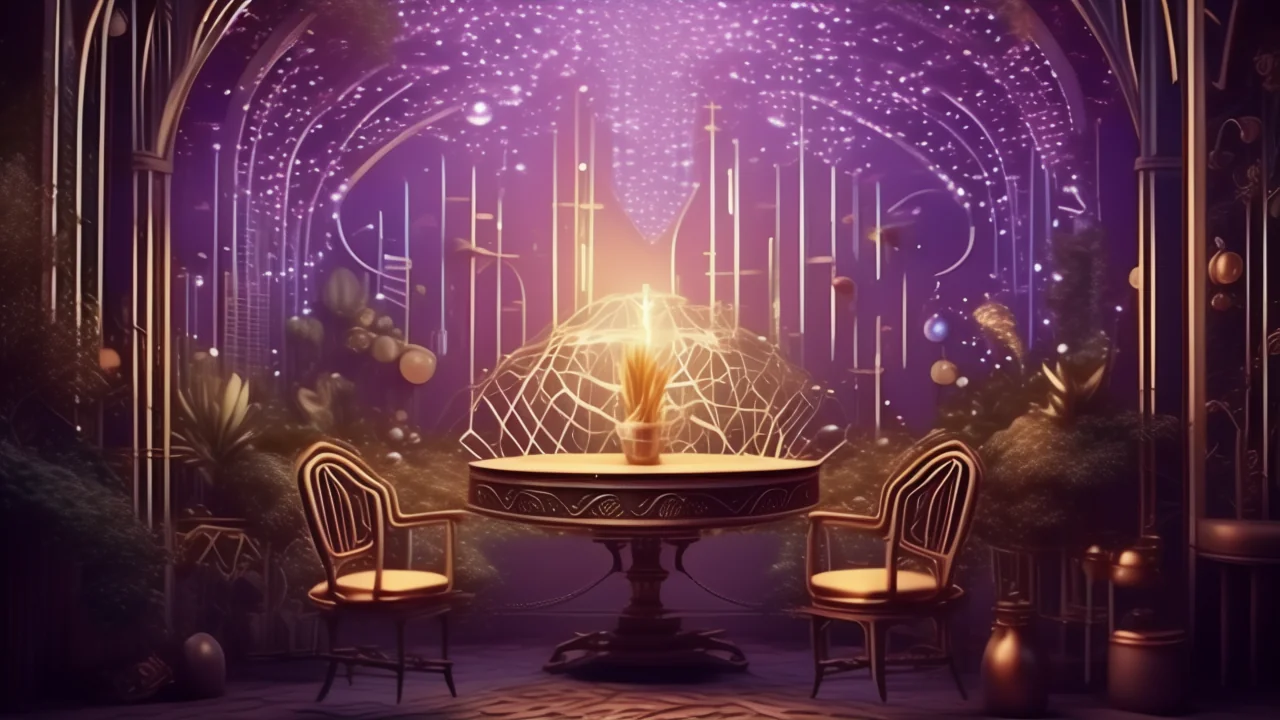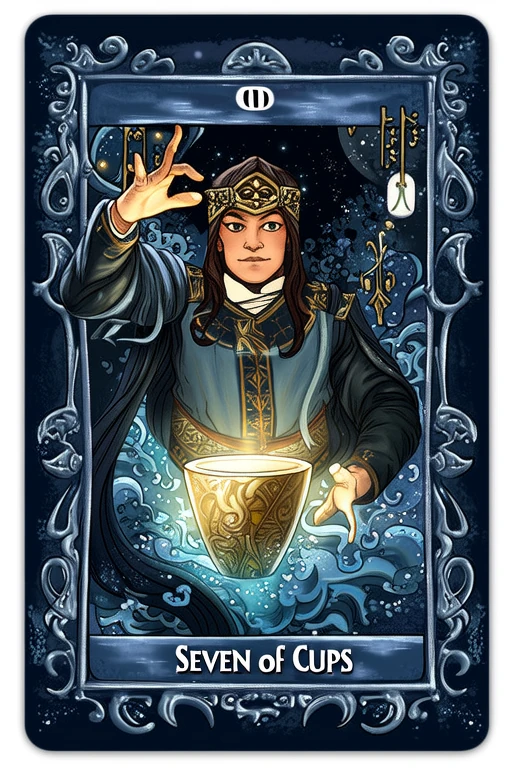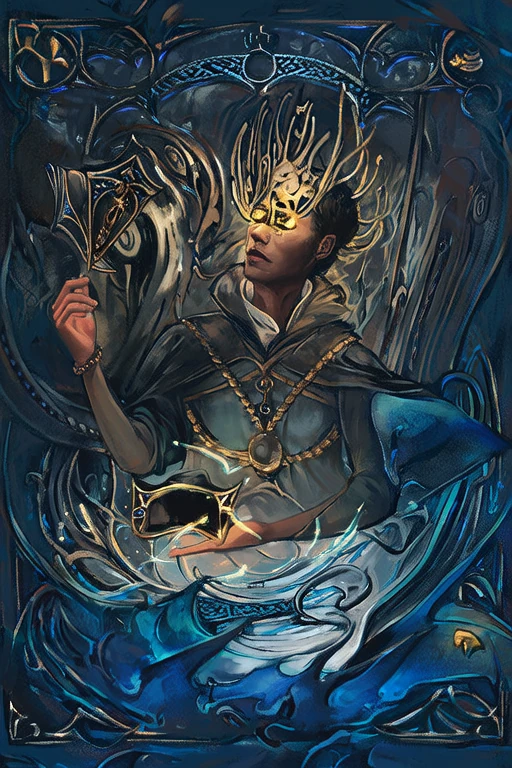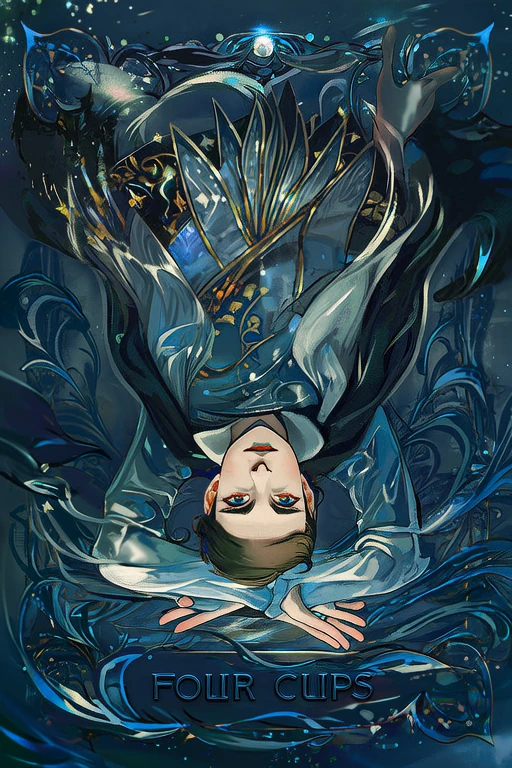
Seven of Cups
Discover the deep meaning of Seven of Cups with our free AI-powered tarot interpretation. Get instant, accurate readings based on advanced tarot knowledge.

Keywords
Upright Meaning
Opportunities, choices, wishful thinking
Reversed Meaning
Alignment, personal values, overwhelmed by choices
Full Interpretation
The Seven of Cups represents multiple opportunities, choices, and the need to make decisions.
In-Depth Analysis
📜 Historical Background
The Seven of Cups is one of the 56 Minor Arcana cards in the tarot deck, specifically belonging to the suit of Cups, which corresponds to the element of Water and is associated with emotions, intuition, and relationships. Its origins trace back to early 15th-century Europe, particularly in Italy and France, where tarot was initially used as a card game before evolving into a tool for divination and spiritual insight during the 18th and 19th centuries. The earliest known depictions of this card can be found in the Visconti-Sforza tarot deck, one of the oldest surviving tarot sets from the 1400s. In this deck, the Seven of Cups was illustrated with seven ornate cups, often arranged in a pyramid or scattered pattern, symbolizing abundance, choice, and emotional complexity.
During the Renaissance, tarot cards were heavily influenced by Hermeticism, alchemy, and Christian mysticism. The Seven of Cups was often interpreted as a representation of the Seven Deadly Sins or the Seven Virtues, depending on the context of the reading. In some interpretations, the card was linked to the biblical story of Jacob’s Ladder or the seven sacraments, adding a spiritual dimension to its meaning. As tarot evolved into a mystical tool in the 19th century, especially through the work of the Hermetic Order of the Golden Dawn and later the Rider-Waite-Smith deck (1909), the imagery of the Seven of Cups became more symbolic and psychologically rich.
In the Rider-Waite-Smith tradition, the card typically shows a figure standing before seven floating cups, some of which contain alluring or fantastical objects. This imagery reflects the theme of illusion, temptation, and the need to discern between what is real and what is merely a fantasy. The card’s design has varied across different tarot decks, such as the Thoth Tarot by Aleister Crowley, where the Seven of Cups is labeled “Lord of Deceit” and carries a more overtly negative connotation of confusion and deception. In contrast, modern decks like the Wild Unknown or the Modern Witch Tarot present the card with minimalist or nature-inspired designs, focusing on emotional overwhelm and the need for clarity.
Culturally, the Seven of Cups has been interpreted in various ways across different traditions. In some Eastern European interpretations, it is seen as a warning against greed and false promises, while in Western esoteric traditions, it often serves as a mirror to the subconscious mind, urging the querent to confront their desires and illusions. This adaptability and depth have allowed the Seven of Cups to remain a significant and thought-provoking card in both historical and contemporary tarot practice.
Symbolism & Imagery
The Seven of Cups is rich in symbolism, with each element in its imagery contributing to a deeper understanding of its meaning. At the core of the card is the central figure, often depicted as a person standing before seven floating or arranged cups. These cups are usually filled with various objects—some enticing, others bizarre or even disturbing. The cups themselves symbolize emotions, intuition, and the subconscious mind. The number seven, a powerful spiritual number, adds layers of meaning, representing completeness, mystery, and introspection.
Each cup can be seen as a different dream, illusion, or desire. Some cups may contain jewels, serpents, fish, or even a dragon, symbolizing the allure of material gain, hidden fears, or transformative potential. The presence of these varied contents reflects the complexity of human emotion and the many choices or distractions one may face. The central figure is often shown in a contemplative or overwhelmed posture, emphasizing the challenge of making a choice amidst emotional confusion.
Color symbolism plays a crucial role in interpreting the Seven of Cups. Blues and silvers are commonly used, representing the Water element, emotional depth, and the reflective nature of the subconscious. However, some decks use contrasting colors—such as red or gold—to highlight temptation or desire. The background often features mist or clouds, suggesting uncertainty and the veiled nature of truth.
Across cultures, the interpretation of the Seven of Cups varies. In traditional European tarot, it is often seen as a cautionary card, warning against being misled by illusions or false promises. In contrast, some modern interpretations view it as a call to explore one’s inner world and uncover hidden truths. In Jungian psychology, the card may represent the shadow self—the parts of the psyche that are repressed or unacknowledged.
When upright, the Seven of Cups generally signifies emotional confusion, temptation, or an overabundance of options. It suggests that the querent may be overwhelmed by choices or caught in a fantasy rather than facing reality. Reversed, the card often indicates clarity, the ability to see through illusions, or a necessary confrontation with reality after a period of confusion.
The Seven of Cups is closely connected to other cards in the tarot deck. It shares thematic similarities with the Five of Cups (emotional loss and regret) and the Nine of Cups (emotional fulfillment). It also echoes the themes of the Devil card (temptation and bondage) and the Moon (illusion and hidden fears). Together, these cards form a narrative about emotional maturity, discernment, and the journey from confusion to clarity.
Psychological Insights
From a psychological perspective, the Seven of Cups can be deeply understood through the lens of Carl Jung’s theories, particularly his concept of archetypes and the shadow self. The card reflects the inner conflict between conscious desires and unconscious motivations. The seven cups represent different aspects of the psyche—some conscious, others hidden in the subconscious. This card often appears when a person is confronted with internal confusion, emotional overload, or conflicting desires that need to be sorted and understood.
Jung’s idea of the shadow—the repressed or unacknowledged parts of the self—is particularly relevant here. The Seven of Cups encourages the querent to look beyond surface-level emotions and examine what lies beneath. The allure of the cups may represent repressed desires, fears, or even unacknowledged talents. In this sense, the card serves as a mirror to the subconscious, urging the individual to confront what they may be avoiding or denying.
In modern life, the Seven of Cups holds significant relevance, especially in decision-making and emotional management. With the abundance of choices in today’s world—career paths, relationships, lifestyle options—many people experience decision fatigue and emotional overwhelm. The card serves as a reminder to slow down, assess priorities, and distinguish between genuine desires and fleeting fantasies.
For personal growth and self-awareness, the Seven of Cups invites introspection. It encourages individuals to explore their emotional patterns, recognize self-deception, and make choices that align with their authentic selves. In therapeutic settings, this card can indicate the need to address emotional confusion, unresolved trauma, or addictive behaviors. Counselors and tarot practitioners may use this card to guide clients in exploring their inner conflicts and identifying the root causes of their indecision or dissatisfaction.
Spiritually, the Seven of Cups is often used in meditation and shadow work. It is a powerful tool for uncovering hidden truths and navigating emotional complexity. Many modern spiritual practitioners use this card as a prompt for journaling, dream analysis, or guided visualization to explore the subconscious mind. Its appearance in a reading may suggest a time of inner reflection, the need to release illusions, or a call to embrace emotional clarity and self-honesty.
Correspondences
The Seven of Cups is associated with the astrological sign of Scorpio, ruled by the planets Mars and Pluto. Scorpio’s intense emotional nature, depth of feeling, and tendency toward secrecy and transformation align closely with the card’s themes of emotional complexity, hidden desires, and psychological depth. The planetary influences of Mars (action, desire) and Pluto (transformation, power) further emphasize the card’s connection to subconscious motivations and the need for emotional clarity.
In terms of gemstones and crystals, the Seven of Cups resonates with stones that promote emotional healing and clarity, such as amethyst, which enhances intuition and spiritual insight; labradorite, which protects against illusions and enhances self-awareness; and black tourmaline, which grounds energy and dispels confusion. Essential oils like lavender, frankincense, and myrrh can be used to support emotional balance and meditation when working with this card’s energy.
Herbs associated with the Seven of Cups include mugwort, known for enhancing dreams and psychic awareness; rosemary, which aids in mental clarity and protection; and chamomile, which soothes emotional distress and promotes introspection. These herbs can be burned as incense or used in teas during tarot readings or meditation sessions.
The card is linked to the element of Water, representing emotions, intuition, and the subconscious. It is best worked with during the autumn season, a time of transition and reflection, and during the evening hours when the veil between the conscious and subconscious is thinner. The Seven of Cups also corresponds to the sacral chakra (Svadhisthana), which governs emotional balance, creativity, and sensuality. Working with this card can help align and heal this energy center.
Numerologically, the number seven is highly symbolic, representing spiritual awakening, introspection, and the pursuit of deeper truths. This reinforces the card’s message of looking inward, questioning illusions, and seeking clarity beyond surface appearances.
❓ Frequently Asked Questions
One of the most common questions surrounding the Seven of Cups is: 'Does this card always mean confusion or illusion?' While the card often indicates emotional overwhelm or deception, its meaning can vary depending on context. In some readings, it may simply reflect a time of many choices or emotional richness rather than confusion. Another frequently asked question is whether the Seven of Cups is a negative card. While it can warn against self-deception or distractions, it is not inherently negative—it is more about awareness and discernment.
Beginners often misinterpret the Seven of Cups as a card of indecision only. However, it also speaks to the power of imagination, creativity, and emotional depth. It encourages the querent to explore their inner world and recognize the value of their dreams, even if they are not immediately actionable.
For professional readers, the Seven of Cups works well in spreads that explore emotional dynamics, such as the Celtic Cross or the Relationship Spread. In a three-card reading, it can represent the emotional challenge or underlying illusion in a situation. When combined with other cards, its meaning shifts: with the Two of Cups, it may suggest emotional confusion in a relationship; with the Hermit, it may indicate a need for introspection; with the Devil, it warns of addictive illusions or attachments.
Interpreting the Seven of Cups in different contexts requires sensitivity. In love readings, it may suggest emotional uncertainty or idealization of a partner. In career readings, it could indicate distractions or too many options. In health readings, it might point to emotional stress or the need to address psychological factors affecting well-being.
Practical advice for working with the Seven of Cups includes journaling about emotional patterns, meditating on the card’s imagery, and asking reflective questions like, 'What am I avoiding?' or 'What illusions might I be holding onto?' By engaging with the card in this way, readers can gain deeper insight into their emotional landscape and make more conscious, empowered choices.
Practical Readings
Love Reading – Free • Online • AI • Instant • Accurate
In love, Seven of Cups upright: Opportunities, choices, wishful thinking. Reversed: Alignment, personal values, overwhelmed by choices.
Career Reading – Free • Online • AI • Instant • Accurate
For career, Seven of Cups upright: Opportunities, choices, wishful thinking. Reversed: Alignment, personal values, overwhelmed by choices.
Yes‑No Reading – Free • Online • AI • Instant • Accurate
As a quick yes‑no: upright tends toward “yes”, reversed leans “no”—interpret within your question’s context.
FAQ
What does Seven of Cups mean in tarot?
Seven of Cups represents opportunities, choices, wishful thinking. This card encourages The Seven of Cups represents multiple opportunities, choices, and the need to make decisions.
What is Seven of Cups reversed meaning?
When Seven of Cups appears reversed, it signifies alignment, personal values, overwhelmed by choices. Consider areas that may require adjustment or release.
Is Seven of Cups a positive card?
Seven of Cups is generally considered a neutral to positive card, representing opportunities, choices, wishful thinking.
What should I do if I draw Seven of Cups?
If you draw Seven of Cups, focus on opportunities, choices, wishful thinking. Align actions with the card’s upright energy.
How do I interpret Seven of Cups in a love reading?
In love readings, Seven of Cups suggests opportunities, choices, wishful thinking in relationships. Consider how opportunities and choices apply to your situation.
What does Seven of Cups mean in a love reading?
In love, Seven of Cups points to opportunities, choices, wishful thinking when upright and alignment, personal values, overwhelmed by choices reversed. Reflect on relational balance & authenticity.
How is Seven of Cups interpreted in career?
For career, Seven of Cups upright highlights opportunities, choices, wishful thinking while reversed warns of alignment, personal values, overwhelmed by choices—adjust planning & execution.
What is the financial meaning of Seven of Cups?
Financially, Seven of Cups suggests opportunities, choices, wishful thinking potential; reversed indicates alignment, personal values, overwhelmed by choices—use prudent pacing.
Is Seven of Cups a yes or no card?
Seven of Cups is generally a context-dependent when upright; reversed leans toward hesitation or NO—apply to the nuance of your question.
References
References
- Encyclopaedia Britannica – Tarot
Historical overview and cultural context of tarot cards.
- Wikipedia – Tarot
General reference on tarot history, structure, and usage.
- Biddy Tarot – Tarot Card Meanings
Widely cited interpretations and learning resources.
- Labyrinthos – Tarot Card Meanings
Educational articles on major and minor arcana.



